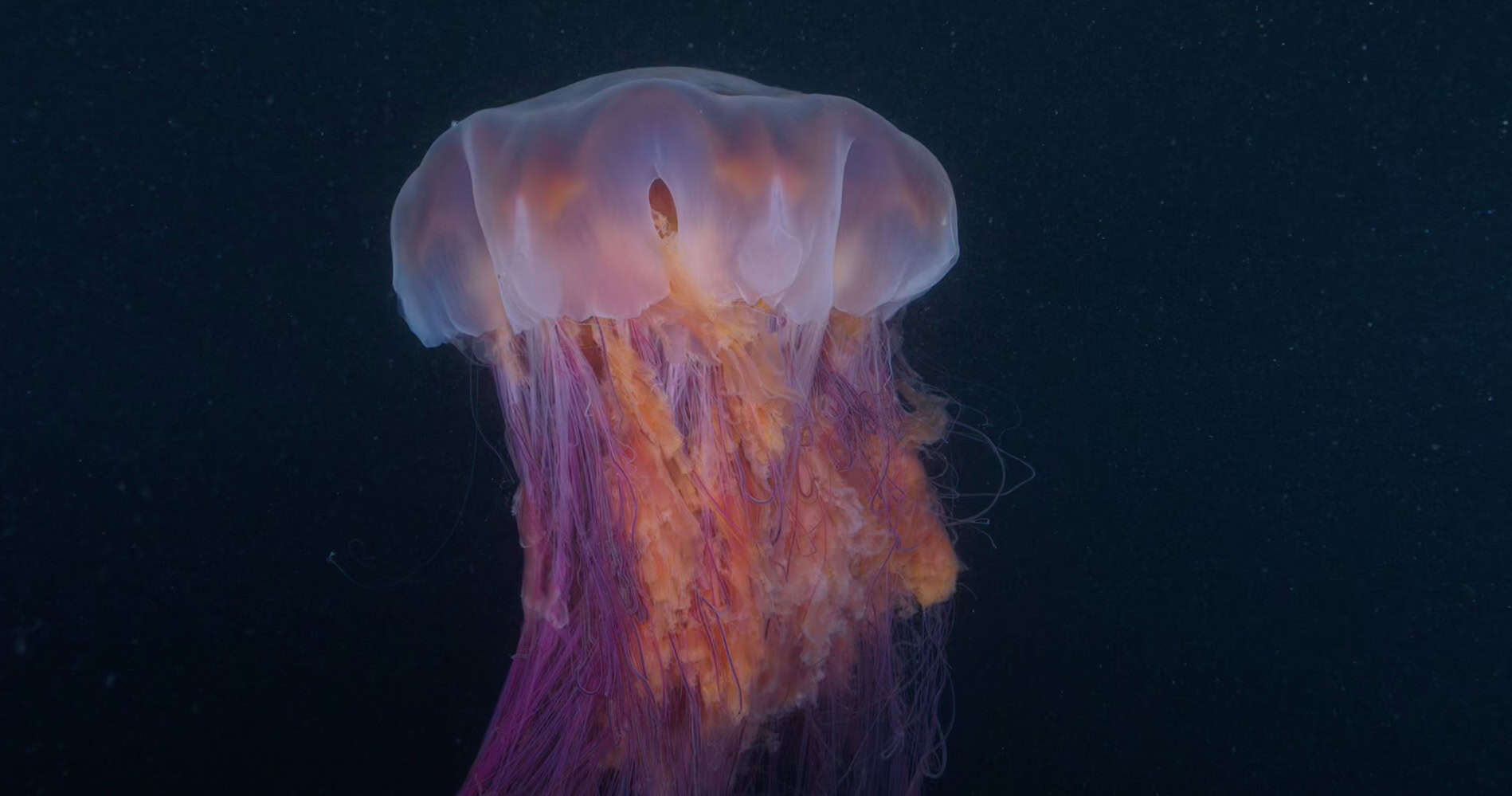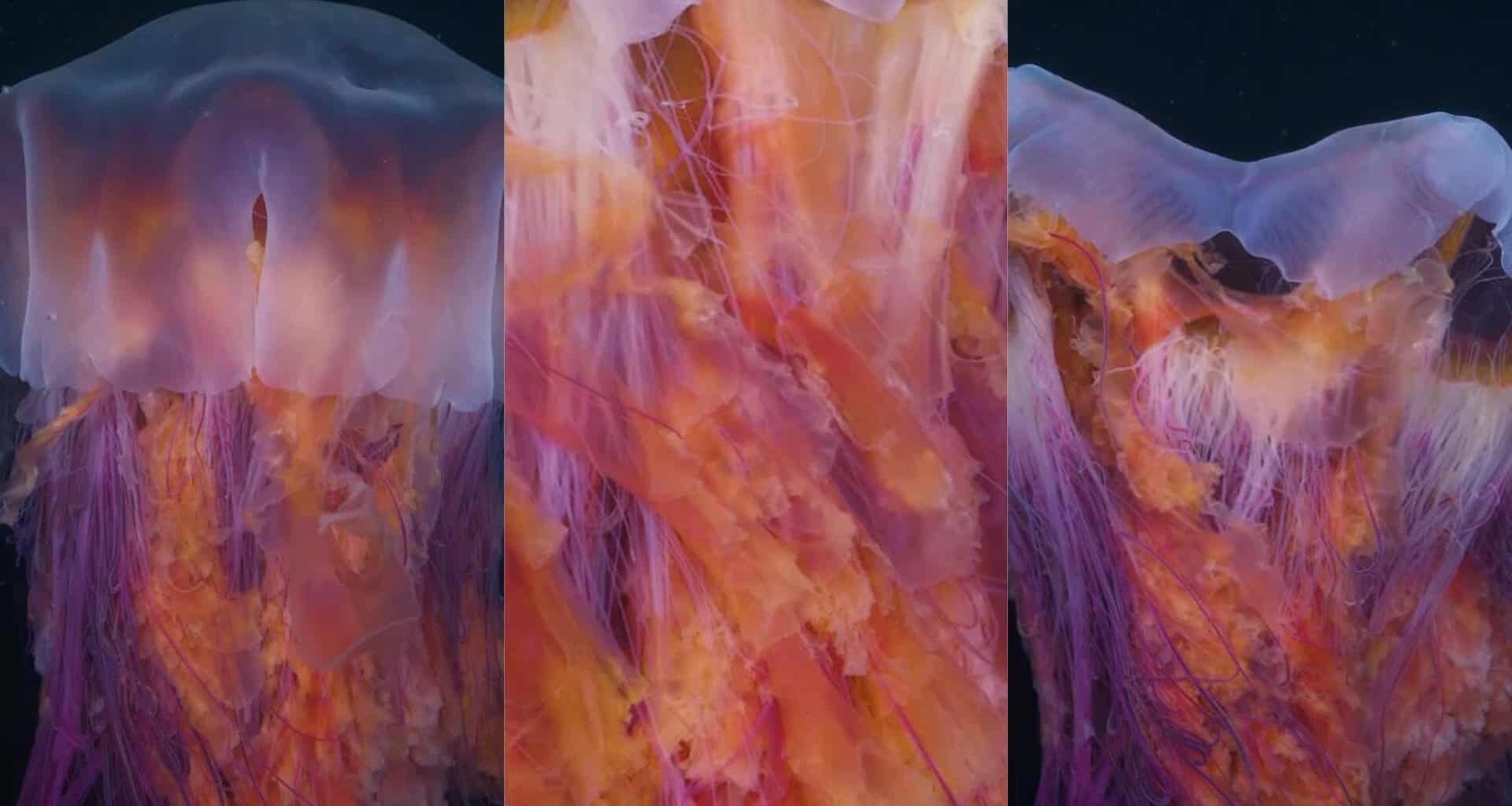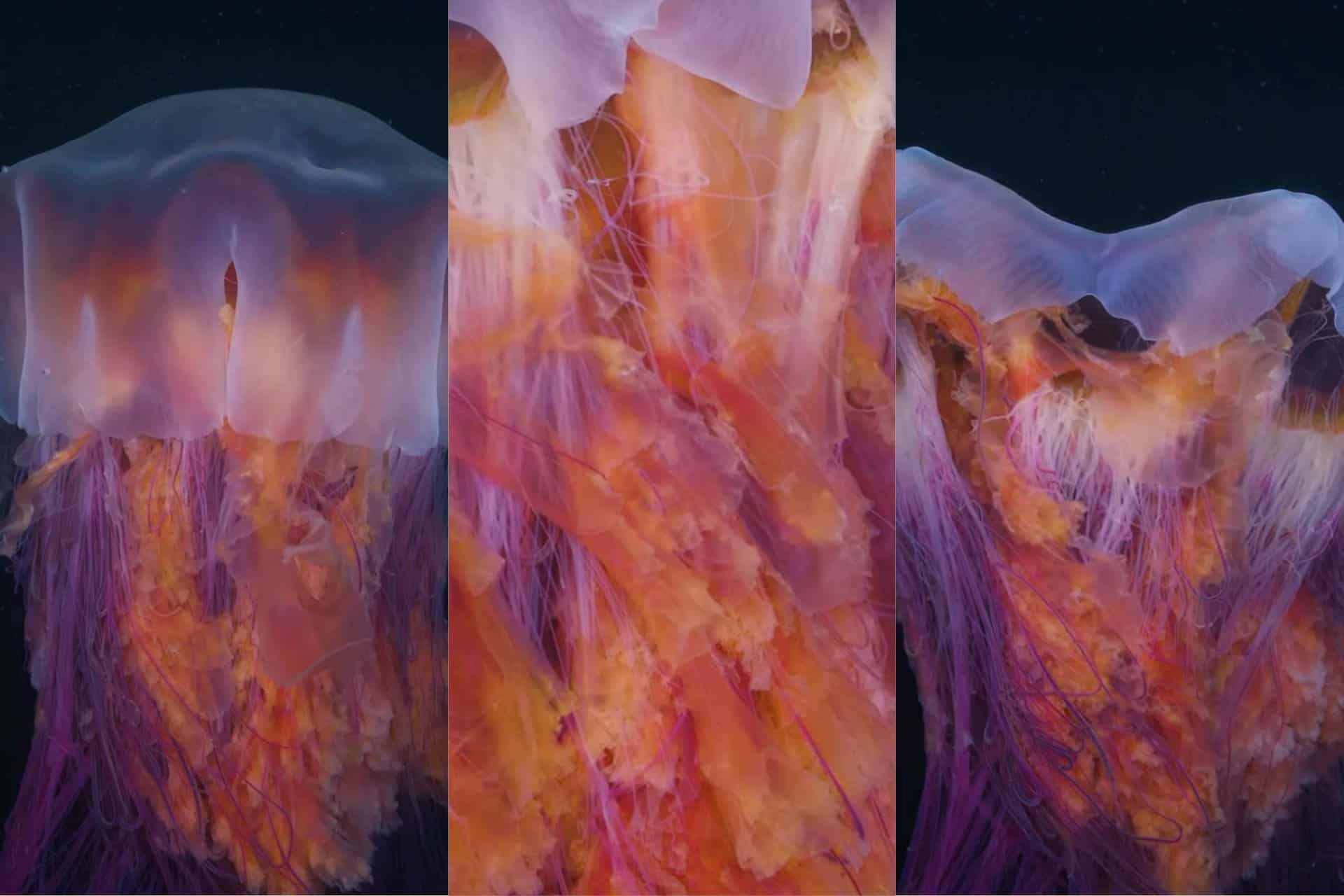 The giant itself. Credit: John Roney
The giant itself. Credit: John Roney
Divers often come across weird, unexpected things. It’s not always a good idea to investigate up close. But when John Roney saw a tentacle just above him, he had to see what was happening.
“Several minutes into the dive, I noticed a long, thin tentacle trailing overhead, stretching far beyond my vision,” he said. “I followed it through the darkness for over a minute before coming upon a giant Lion’s Mane Jellyfish.”
Roney captured the moment on video in the Salish Sea, a stretch of ocean between Washington State and British Columbia. His footage shows the enormous jellyfish slowly moving through the water. Beneath the bell, dozens of orange, purple, and crimson tentacles sway in the current.
“These incredible creatures can reach unbelievable sizes,” Roney said. “The largest recorded had a bell with a diameter of 7 feet (2.1 meters) and tentacles extending up to 120 feet (36.6 meters). They use their stinging tentacles to ensnare, pull in, and eat prey such as fish, zooplankton, and other jellyfish.”
Moderately Painful
The lion’s mane jellyfish is the largest known jellyfish species. Typical bell sizes are on the order of 1–2 meters across in colder seas, and some reports suggest tentacles reaching 30–36 meters (100–120 ft) in length. Its total body volume and tentacle mass are so great that the Guinness World Records estimates a maximum possible weight exceeding one ton, though no specimen has been weighed directly to confirm this.
Despite its daunting proportions, its sting is only “moderately painful,” according to the Virginia Institute of Marine Science. It’s enough to leave a mark, but not to kill. In the early 20th century, though, the jellyfish’s formidable image inspired fiction. Sir Arthur Conan Doyle turned it into a murder weapon in his Sherlock Holmes story The Adventure of the Lion’s Mane.
Roney’s encounter was more awe than fear. Filming after sunset with another diver, he traced the jelly’s glowing form through the inky water of the Salish Sea, a place where cold Pacific currents mix with nutrients from the mainland. In those depths, jellyfish like the lion’s mane thrive, occasionally crossing paths with humans.
A Stunning Encounter
Roney described the jellyfish’s tentacles as “deep, vibrant orange, purple and crimson colors that I love to film,” adding, “Fair warning—this is a jellyfish you definitely don’t want to touch.”
His video has drawn attention for the jellyfish’s remarkable size, but besides that, the lion’s mane jellyfish is rather fragile. Its body, made mostly of water, drifts wherever the currents take it. Most never grow this large—only in cold, nutrient-rich waters like the Salish Sea or the North Atlantic do they reach their full size.
The encounter didn’t last long. After a few minutes, the jellyfish drifted away into the dark, its tentacles fading from view. Back on the surface, Roney reviewed the footage—proof of how strange and beautiful even a brief moment underwater can be.
You can find more footage of the jellyfish on his Instagram.


